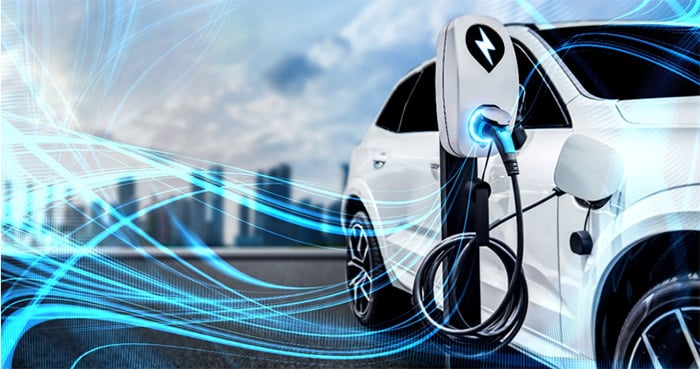As the world swiftly transitions to sustainable transportation, electric vehicles (EVs) are increasingly populating our streets. The key to promoting the widespread use of EVs lies in ensuring the presence of efficient and dependable charging infrastructure. Advanced connectivity is pivotal in this regard, as it transforms the EV charging experience and significantly boosts user satisfaction.

The Role of Connectivity in EV Charging
Connectivity forms the backbone of contemporary EV charging systems. It enables real-time interaction between charging stations, vehicles, and the electrical grid, ensuring a seamless and efficient charging experience. Connected infrastructure allows EV charging stations to provide current information on availability, optimize charging times, and offer a smooth user experience. This reduces range anxiety and motivates more individuals to adopt electric vehicles. For domestic EV charger wall boxes, a constant Wi-Fi connection to the home router is required to keep users informed of electricity fee fluctuation and the electricity load in the service backend.
In a lot of cases, a Wi-Fi connection drop will cause the charge to stop. Keeping the connection active 100% of the time while charging might be challenging as the home network gets saturated and the wall box is in a remote area (garage). Therefore, these EV chargers must be built in with highly robust Wi-Fi technology.
Renesas' Comprehensive EV Charging Solutions
Renesas offers a comprehensive range of EV charging solutions, including the versatile 1- to 3-phase AC Electric Vehicle (EV) charger wall box. This solution is scalable and supports multiple IoT connectivity options due to its modular design. Key features include an integrated electric meter/metrology, a Linux-based OS on a high-performance MPU, a user-friendly HMI with touchscreen, and various communication interfaces such as OCPP Car2Charger I/F, Ethernet/Wi-Fi, Bluetooth® for smartphone/tablet connectivity, and Near Field Communication (NFC) for user authentication and billing.
NFC-based EV charging systems ensure that only authorized users can initiate the charging process or make payments via banking or prepaid cards. Renesas' NFC technology excels in RF performance, thanks to the unique sine-wave architecture of its PTX NFC reader family (PTX105R, PTX100R, PTX130R). Combined with Renesas DiRAC™ direct-to-antenna technology, this technology eliminates the need for an EMC filter found in traditional NFC chips and allows for advanced wave shaping control. These innovations result in superior RF performance, providing a larger operating volume even when operating behind a noisy display, as seen in smart terminals like EV chargers.
Additionally, Renesas offers a portable EV charger solution, a versatile battery-powered DC charger designed for remote charging capabilities. This "Virtual Gas Can" is ideal for service companies and EV installations where AC-powered chargers are unavailable. The system features Level 2 support for faster remote charge times and Bluetooth connectivity for status updates.
Another Renesas solution is the DA16200 ultra-low power Wi-Fi SoC, a fully integrated wireless networking device that supports Wi-Fi 802.11n technology. Matter-ready, it comes with a complete Wi-Fi protocol stack for use in stand-alone mode or with an external host controller. The DA16200's exceptional RF performance ensures reliable connectivity over long distances and in environments with interference from other Wi-Fi transmitters.
In EV chargers, Bluetooth Low Energy (LE) is also particularly suitable for Wi-Fi provisioning. Renesas' DA14531 offers a complete Bluetooth LE system, providing an ultra-compact and low-power radio IC solution.
Conclusion
The integration of connected infrastructure in EV charging is not just a technological advancement; it is essential for the widespread adoption of electric vehicles. Renesas' innovative solutions are paving the way for a future where EV charging is seamless, efficient, and accessible to all. By leveraging the power of connectivity, we can unlock the full potential of EVs and contribute to a cleaner, greener world.
Connected infrastructure has the ability to revolutionize our mobility, making road transportation more efficient, safer, and eco-friendly. The World Economic Forum outlines several key applications that highlight the benefits of connected mobility infrastructure:
- Smart EV Charging: Provides real-time updates on charging station availability, optimizes charging schedules, and ensures a smooth user experience. This helps to cut down on greenhouse gas emissions and air pollution.
- Advanced Traffic Management: Enhances road safety and traffic efficiency by delivering real-time traffic and accident data, allowing for dynamic adjustments to traffic light cycles.
- Smart Parking: Uses real-time data from sensors and cameras to direct drivers to available parking spaces, which helps reduce congestion and emissions.
- Intelligent Tolls: Streamlines traffic flow and simplifies toll collection through adaptive tolls and vehicle-to-everything (V2X) communication.
Visit our Wireless Connectivity webpage to learn more about wireless solutions for EV charging.




